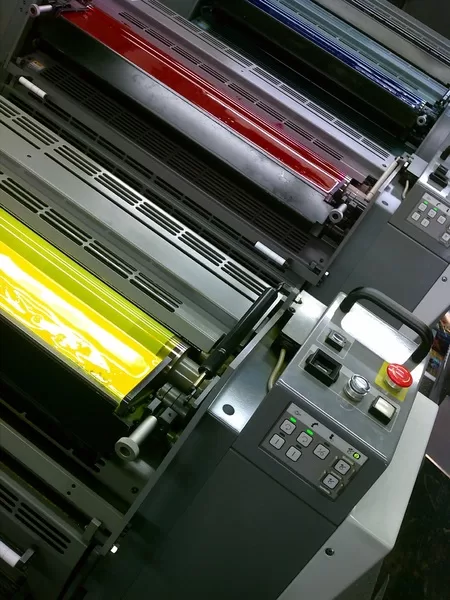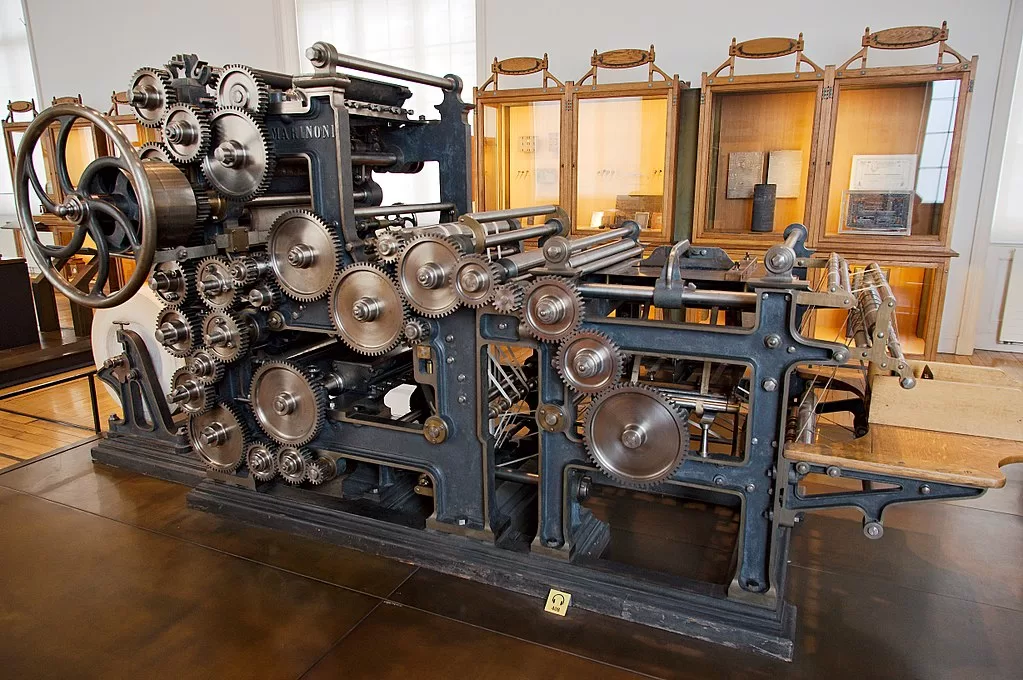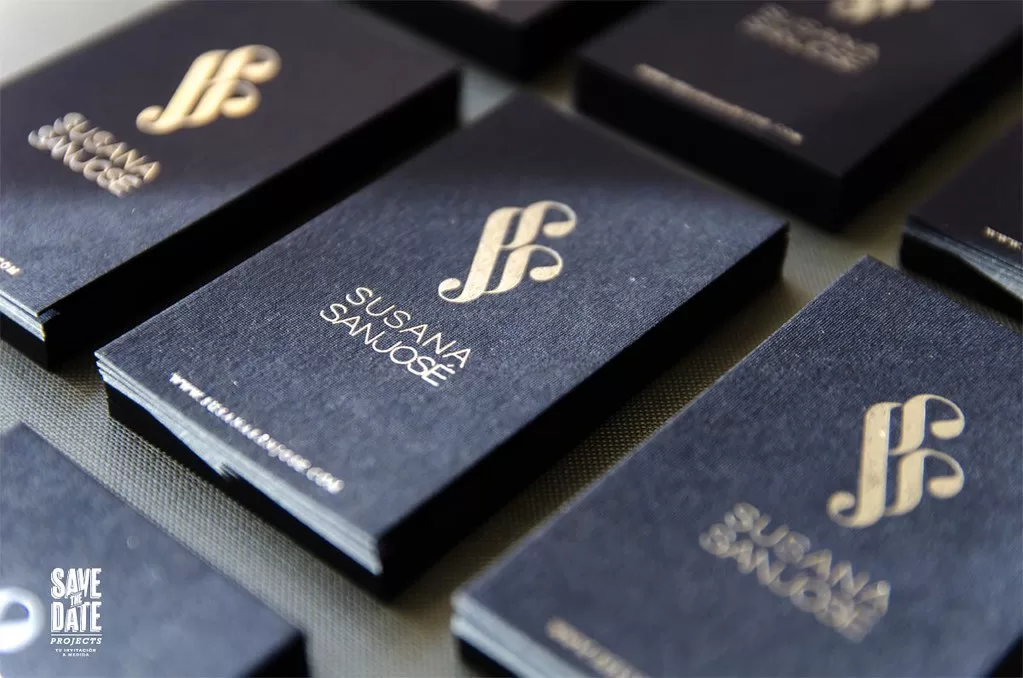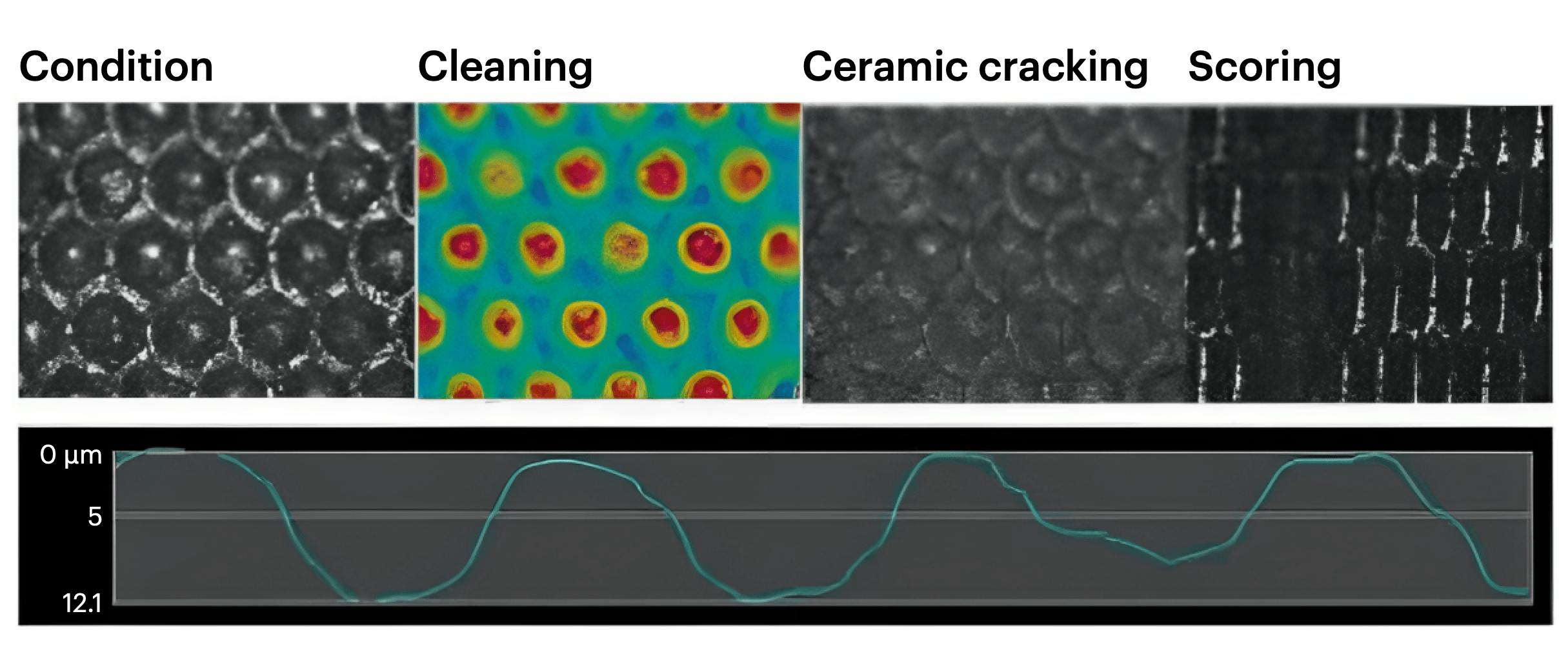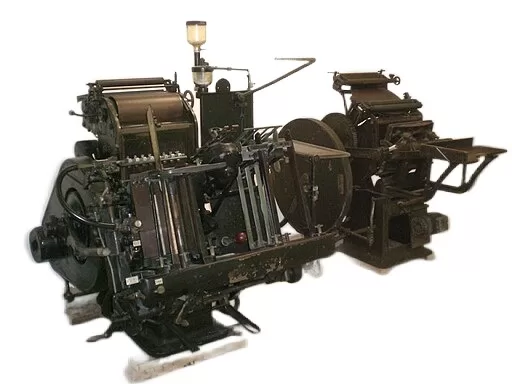What Are Scoring Lines on Anilox Rolls?
Scoring lines is one of the most problematic and costly defects of anilox rolls in flexographic printing. It should be remembered that anilox rolls are the most expensive component of the flexographic printing press. Scoring lines are the lines that damage the engraved ceramic material of the anilox rolls.
In certain printing outcomes, you might have seen a light line or a significantly dark line compared to the color of the rest of the printing area. These are the scoring lines, and they will surely leave the customer unhappy. Scoring lines are the damage on the exterior portion of the anilox rolls engraving.
There are multiple reasons for scoring lines, but the doctor’s blade is the most important cause. The repair costs of anilox rolls in terms of scoring lines are very expensive. Scoring lines gives a non-uniform print result, which the customers will likely reject.
What Are the Types of Scoring Lines on Anilox Rolls?
There are two major types of scoring lines on anilox rolls. The difference between these two scoring lines can be estimated by looking at the print results. The one with light streaks on the printed area is called light polishing, and the dark streaks are because of deep gouging scoring lines. Following is a summary of the types of scoring lines:
Deep Gouging Scoring Lines
Deep gouging scoring lines occur when the ceramic layer of anilox rolls is damaged considerably. Generally, it happens when the operator of flexographic printing exerts more pressure to avoid ink leakages. The blade’s tip scratches the ceramic surface and damages the engraving air.
Consequently, more ink Is delivered to this damaged engraving area, and you will see a darker print result for this area. Therefore, this scoring line gives a darker impression than the rest of the print area. Furthermore, it is also a factor that causes ink wastage.
Light Polishing Scoring Lines
Light polishing scoring lines are the most common in the flexographic printing press. These scoring lines show a light streak on the output printing version. Therefore, the ink is either missing or very light in the area of light polishing scoring lines.
This printing problem on anilox rolls is caused by a piece of trapped material that will brush away the top layer of anilox rolls. Resultantly, this part of anilox rolls will carry lesser ink. Consequently, you will see the light streaks in the final printed results.
What Are the Reasons for Scoring Lines?
A wide range of issues must be taken into account to understand the reasons for scoring lines on anilox rolls. However, with an ample understanding of the reasons causing scoring lines, one can prevent it in the future as it is very costly damage.
Accumulation Of Small Particles in Ink Metering Process
In general, scoring lines occur during the ink metering process at the point of contact of the doctor blade and the anilox rolls. The most common reason for scoring lines is the hard particles that get trapped between the doctor’s blade’s point of contact and the anilox rolls. The smaller particles may scratch the ceramic surface of the anilox rolls, resulting in light streaks on the printed surface.
Excessive Brake Pressure
Furthermore, the excessive brake pressure applied by the operators is also a significant reason for scoring lines. The brake pressure will disrupt the functioning of the doctor’s blade. Resultantly, it will damage the engraving layer of the anilox rolls. The operators use excessive brake pressure to cover misalignment, chamber leaks, or mechanical creep. The blade tip will come off due to this excessive pressure and cause scoring lines.
Trapped Particles in Ink Unit
Sometimes, small particles get trapped in the ink unit with time. These particles in the ink unit can easily reach the point of contact between the doctor’s blade and the anilox rolls. Thereby, they can damage the surface of the anilox rolls. Furthermore, these particles may also break the tip of the doctor’s blade, resulting in more ink flow. Thus, it causes dark streaks on the print result.
Misalignment Of Blade Holder
In flexographic printing, every blade is meant for a specific LPI (lines per inch). Thereby, you have to adjust the blade alignment when you change the anilox rolls. Similarly, you will have to adjust the blade handle alignment when you remove an old blade and want to replace it with a new one. Failing to align the blade holder will damage the surface of anilox rolls, causing scoring lines.
Clogging Of Small Particles
Clogging of small particles in the engraved area of the anilox rolls is one of the major reasons that cause light streaks type of scoring lines. The small particles get clogged onto the surface of the anilox rolls, reducing the engraved area. Consequently, the final printing result will have a lesser ink impression.
How To Prevent Scoring Lines?
Scoring lines is one of the worst nightmares in flexographic printing because its repair cost is sky-high. Anilox rolls are very expensive to repair or replace. Therefore, it is better to follow a preventive approach to avoid scoring lines. Strict adherence to the below-discussed preventive measures will ward off the threats of problematic scoring lines.
Use Non-Metallic Doctor Blade
The doctor blade is one of the major reasons that result in scoring lines. Traditionally, the doctor blades are made up of metal, and thus, they cause extensive damage when excessive pressure is exerted. Therefore, it would be better to use non-metallic doctor blades to avoid the problem of scoring lines. It will even prove better than the nickel-coated doctor blade.
Clean Anilox Rolls
Cleaning the anilox rolls is the most important aspect of preventing the scoring lines. Therefore, it is essential to clean anilox rolls regularly to remove any trapped particles within the engraving area. It will be a good practice as it prevents scoring lines to a maximum extent.
Filter And Clean Ink Unit
The ink unit will contain small entrapped particles. Therefore, it is necessary to ensure ink flow out of the unit through a proper filter. The filter will trap the small particles that may have caused scoring lines. Therefore, it is important to clean and filter the ink unit thoroughly.
Do not Apply Excessive Pressure on Doctor Blade
Over pressurizing the doctor’s blade will let the tip of the blade break off. The metallic piece of the blade’s tip will damage the ceramic surface of the anilox rolls. Consequently, you will witness scoring lines on the final printed surface. Therefore, it is advisable to exert appropriate pressure on the doctor’s blade in the first place to avoid the costly damage of anilox rolls.
Ensure Proper Chamber Alignment During Blade Installation
The chamber alignment is of sheer importance during the installation of the new doctor blade. Misalignment will use the doctor blade for scratching the engraved surface of the anilox rolls, resulting in scoring lines. Therefore, you should take great care when aligning the chamber. Proper alignment will ward off the immediate threat of scoring lines.
The Crux
Scoring lines is a major problem in flexographic printing. The only solution to this problem is repairing or replacing anilox rolls. However, the replacement or repair of anilox rolls is costly. Scoring lines occur due to a wide range of issues, such as misalignment of the blade, clogging of particles in the ink unit or engraving area, or applying excessive brake pressure.
Therefore, one must take precautionary measures to avoid the costly damage caused by scoring lines. The best preventive action is to clean the anilox rolls regularly. Furthermore, the ink unit should also be cleaned and filtered properly to avoid scoring lines. Lastly, the proper alignment of blades and the use of non-metallic blades will also prevent the issue of scoring lines.
Read next about Correct Use of laser Cleaning for Anilox Rollers


